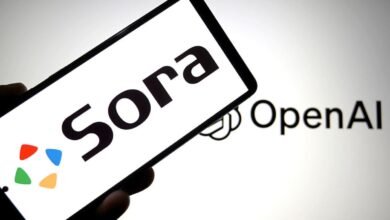Unlock More AI Videos: Sora’s New Premium Plan

▼ Summary
– OpenAI now allows users to purchase extra credits for Sora video generation beyond their free daily allowance, which is currently 100 for Pro users and 30 for others.
– The Sora team leader stated the video platform’s economics are unsustainable and free allowances will be reduced in the future to accommodate growth.
– Additional video generations cost $4 for 10 credits, with credit usage varying by video length and resolution, and credits are valid for 12 months.
– OpenAI is monetizing Sora to scale the platform and foster an AI-powered creator economy, adding features like clip stitching and leaderboards.
– Sora will soon pilot creator monetization, allowing rightsholders to charge for “cameo” deepfake avatars, addressing previous copyright and likeness issues.
If you frequently find your Sora video generation credits running out, there’s now a solution. OpenAI has introduced a new premium option allowing users to purchase additional credits for creating more AI-generated videos. This change comes as the company acknowledges that its current free allowance model is not economically sustainable in the long run.
According to Bill Peebles, who heads the Sora team at OpenAI, the platform’s existing structure cannot continue indefinitely. He noted that many active users feel constrained by the daily free generation limits, currently set at 100 videos for Pro subscribers and 30 for standard users. To address this, OpenAI is enabling creators to essentially buy as much capacity as they are willing to pay for, moving toward a more flexible usage-based system.
Pricing for these extra generations starts at $4 for an additional ten videos, as indicated on Sora’s Apple App Store listing. However, the actual number of credits consumed per video can vary based on factors like duration, resolution, and other technical specifications. Once users reach their free allocation, an in-app purchase option becomes available through the App Store. These purchased credits remain valid for one year and can also be applied to OpenAI’s coding assistant, Codex.
Peebles also hinted that free access may become more restricted over time. He mentioned that to support the platform’s expansion, OpenAI will likely need to reduce the number of free generations offered. While no specific timeline was shared, he assured users that the company plans to communicate any changes openly as they occur.
This shift toward paid credits is part of a larger strategy to monetize Sora and foster what OpenAI envisions as a thriving AI-driven creator ecosystem. Recent platform updates have introduced capabilities such as clip stitching, video popularity leaderboards, and “cameos”, a feature that allows users to generate deepfake avatars of themselves, other individuals, or original characters. This cameo tool has already sparked legal debates, especially as other creators can incorporate these avatars into their own content.
Looking ahead, Sora intends to pilot a monetization program for creators in the near future. Peebles described a potential environment where rights holders could charge premium rates for cameos featuring popular characters or public figures. This represents a significant shift from OpenAI’s earlier stance on copyright and digital likeness, which previously led to widespread unauthorized use of fictional characters like Pikachu and SpongeBob, as well as controversial deepfake videos of historical figures such as Martin Luther King Jr.
(Source: The Verge)





